
A celebration of those members of our extended family who manifested talent in the field of sporting endeavour, both professional and amateur
Our Sporting Men and Women
The family has its share of sporting successes. Abraham Cann was All England Wrestling Champion in the 1820s, dedicated to the Devonshire style of the sport. The story of Abraham can be read here. But he was not the only member of the family to win sporting honours. The family can boast at least one other national champion in George Bubear, whose achievements are described below. George blotted his copybook perhaps, but in his prime he was undoubtedly deserving of the title champion.
However the page is not only about national champions, but also about relatives whose enthusiasm for their sport combined with dedication and talent enough for them to make their mark playing for their local teams or leagues. This page, like all others on this site, is a work in progress, and there is much more research to be done. To that end I would be pleased to hear from family members who can tell me more about relatives' sporting exploits. I'm seeking information for example on the achievements of motorsport enthusiast Bernard Fursdon. So far we have family members who have made their mark in rugby, rowing, tennis and football and cricket in addition to Abe's wrestling.
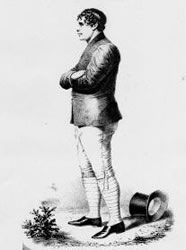
Abe Cann
Tennis
There have been a number of talented amateur tennis players in the family. In the 1920s Pitts cousin Leonore de Chanval Pellier (b.1905) played regularly in local tournaments. Leonore seems to have been an all-round sport. In 1929 she gained her aviator's certificate, and flew with the Bristol and Wessex Aero Club.
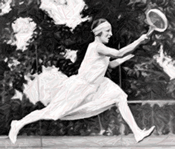
Aunt Phyllis Cross née Heard (1924-1969) was also an enthusiastic and able amateur who played in local tournaments.
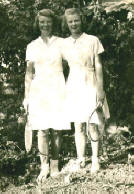
Swimming

Hugh Blaen - All-Rounder
  |
| Above, middle row 2nd from left: Hugh in Queen Elizabeth's School 1st XV; Above right: Breasting the tape in school athletics. Below QES Athletics Left: Long jump.Right; seated centre: Team captain in 1927. |

Hugh Blaen was born in 1909 in Worcestershire, but when his mother died at the age of 8, his father brought him to Crediton so he could be close to his mother's sister, and he was brought up there among family that were connected to our Fey, Hector and Cornish relations. He attended Queen Elizabeth's Grammar school in Crediton, and was not only a sound academic pupil, but was an outstanding sportsman. At various times he was captain of the school Athletics team, the Rugby XV, the Cricket team and played for the school Football team. He won many cups for his sporting achievements. He continued his sporting activities after leaving school. With his friend Dr. Jackson he revived the Crediton cricket team after the War. He can be seen with the team below.
 |
|
|
| Above left: Cricketer Hugh Blaen. Above right: Long jumper Hugh Blaen | ||
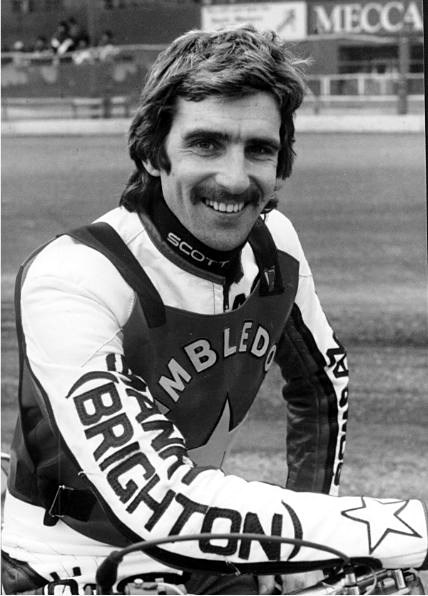
Speedway
Roger Johns was born in 1954, descended from baker Walter Pickett, who had moved from Devon to London in the 1860s.
Roger had started riding at the early age of 16, in 1970, for Eastbourne. He learned his trade with the club, and rode with other clubs in 1972 and 1973, including Oxford, Reading, Wembley and Wolves. Then in 1974 he joined Wimbledon Dons. He appeared with the club at over 570 meetings, between 1974 and 1989. He was made club captain, and many fans maintain that Roger Johns' years were the golden years of Wimbledon Speedway. Roger rode for the England team on several occasions, and in 1979 was in the British Championship final, finishing about half way down the field. He ended his career riding for Rye House, and retired after the 1991 season.
Top and above, Roger Johns, speedway star
Rugby - A Sport For All The Family
With so many of our extended family originating in the small market town of Crediton it is hardly surprising that they have been well represented in the town's sporting life for several generations. Family members have particularly excelled at rugby, and many of them are closely linked to the history of Crediton Rugby Club. Officially formed in 1878 the club had some patchy early seasons, but in 1898 it won the Devon Senior Cup. The club's fortunes continued to fluctuate, but after reaching the final on several occasions it won the Devon Junior Cup in 1924 and 1947. Today the Club is one of the top sides in the County. By the 1887-88 season, 2nd cousin (twice removed) William Berry was playing for the 1st XV, and in the 1888-89 season he was one of 5 Crediton players selected for the Devon County Trial. In the same season his younger brother Hubert Berry was also playing for the club, as captain. William had become a referee by 1890 and seems to have caused controversy with some of his decisions. Browsing through Paul Harris's excellent history, Crediton Rugby - the First 125 Years, it is clear that several cousins and in-laws played for the club at the end of the C19th. In the early years of the C20th we find, standing in the back row of the 1907-1908 2nd XV photo (a team undefeated at home) grandfather Walter Heard. In the following 1908-1909 season great uncle John Wright was playing for the 1st XV. In the 1920s cousin Jack Labbett played for Crediton, and Exeter, and went on to play for the Metropolitan police when he became a London bobby. And so the family commitment to the club continued. Perhaps the best evidence for this is the photo (below) of the successful 1946-47 winners of the Devon Junior Cup, when Crediton beat Buckfastleigh by three points. As well as playing, family members are represented on the committee. Standing 4th from left is great uncle Albert Heard; 8th from left is vice-captain, uncle Denis Heard; fourth from right is grandfather Walter Heard; 3rd from right is distant Fey in-law Hugh Blaen; middle left is Heard in-law Albert Labbett; 4th from left is a cousin's husband, captain, Ted Powlesland; front 2nd from right is 1st cousin, once removed, Charles Haydon. Very much a family affair! Cousins continued playing for Crediton in the 1950s, 60s, 70s and 80s, including one cousin who made over 600 appearances!

Stanley Kelly
Thomas Stanley Kelly (1882-1959) a family rugby celebrity, was first cousin (twice removed) to that very cousin of ours who has made over 600 appearances for Crediton Rugby Club. Known as Stanley, he went to Blundell's School, then joined the Civil Service, working in Customs and Excise. He played in the position of Lock Forward. He was a successful Club and County player, turning out for Devon County in 39 games between 1903 and 1910, including games against New Zealand, South Africa and in 1908-09 against Australia, when he scored the only try against the visitors.
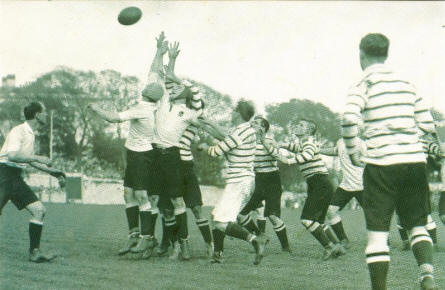
Devon against the Australians in 1908
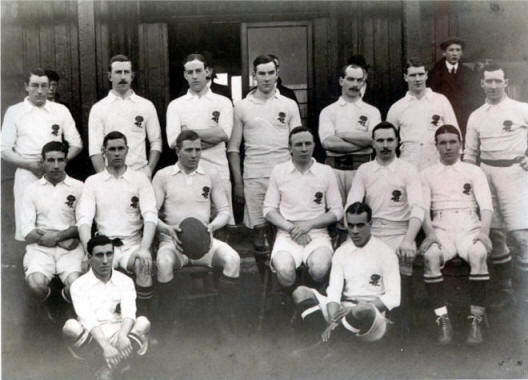
The England XV against Ireland 1907. Stanley Kelly is seated third from right.
George Bubear - Sculling Champion
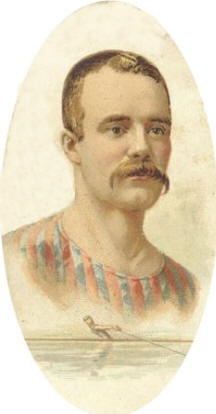 George Bubear (1859-1927) was twice English Professional Sculling Champion, in 1887 and in 1893. In 1894 he set the world record for the Championship course from Putney to Mortlake on the Thames. In 1896 he was a member of the team that won the professional coxless four World Championship in Texas.
Born in Crediton to John and Elizabeth Bubear he was a second cousin to Great-Uncle Walter Bubear. George was second eldest in a family of 13, and as a boy he worked at Higher Wotton farm, Colebrooke. When he was 17 he went to London, and worked as a labourer for the one of the London Water Companies, probably the West Middlesex, which had works at Hammersmith where George lived. It is likely that he learned to row in this capacity, as he would have had little opportunity as a farm servant in Mid-Devon! By 1883 he is describing himself as a waterman.
George Bubear (1859-1927) was twice English Professional Sculling Champion, in 1887 and in 1893. In 1894 he set the world record for the Championship course from Putney to Mortlake on the Thames. In 1896 he was a member of the team that won the professional coxless four World Championship in Texas.
Born in Crediton to John and Elizabeth Bubear he was a second cousin to Great-Uncle Walter Bubear. George was second eldest in a family of 13, and as a boy he worked at Higher Wotton farm, Colebrooke. When he was 17 he went to London, and worked as a labourer for the one of the London Water Companies, probably the West Middlesex, which had works at Hammersmith where George lived. It is likely that he learned to row in this capacity, as he would have had little opportunity as a farm servant in Mid-Devon! By 1883 he is describing himself as a waterman.
He began rowing for sport on the Thames when he joined the Hammersmith Alliance Boat Club in about 1876, soon after he arrived in London, and began to win club prizes. Spurred on by this success he entered the arena of professional racing. He married Agnes Barber in 1880. Their first child George was born in 1881, but died in 1883. There were two more children - Alice and Albert. His first professional race was against Henry Hawkins in December 1880, for a pot of £50, which he won easily. He was less successful in 1881, racing twice, on both occasions losing against Godwin of Battersea. But 1882 was to establish his credentials as a serious rower, as he raced no less than 8 times, losing only twice, and winning prize money of more than £600. He was also able to find time to train members of the Hereford Rowing Club, and participate in their regatta.
In the following years George pursued professional races, as well as participating in regattas, and training others, including Hereford Rowing Club. Most professional races were over the Thames Championship Course from Putney to Mortlake. His form was patchy, and there were rumblings in the press about the surprising outcomes of some of his races. Despite this he was regularly acclaimed as the best rower in England. In 1887 he beat Perkins on the Tyne for the Championship of England, the Sportsman Challenge Cup and £200. Later that year he travelled to North America where he scored a number of victories. His fame was such that his name featured in music hall songs, helped, no doubt, by the fact that one of his principal backers was Acton Phillips, proprietor of the Temple of Varieties at Hammersmith. In February 1888 he lost the Championship to Ross, putting up a poor showing on the Thames course.
In 1888-89 George and a number of other professional rowers undertook promotional tours for a Road Sculler - a three-wheeled contraption that was propelled on land by rowing. He travelled through England and America in 1888 to demonstrate it, though it was never hugely successful.
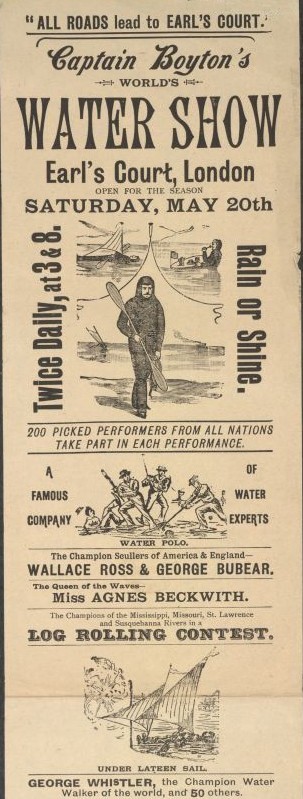
1890 found him in Sydney, Australia, where he joined the East Sydney Rowing Club. He stayed in Australia until 1892, rowing against opponents described as second-rate by the English Press.
In 1893 he beat Hosmer on the Thames to regain the Championship of England, but by the end of the year he had lost the title. His next great triumph was in April 1894, when he beat Barry on the Thames championship course in a record time of 21 minutes, 44 seconds - a record which was to stand for many years.
By now George in his mid-30s there were fewer chances for him to row professional head to head races. Like professional sportsmen before and after him he had become a pub landlord, initially at the Duke's Head, Putney, and then at the White Hart, Barnes - both Thames-side rowing pubs. Several of his brothers joined him in London, and brother Walter started rowing professionally. George continued to promote the Road Sculler, and with fellow professional Wallace Ross, he participated in Captain Boyton's Water Show which toured the UK. He continued to train other professionals. He and fellow professionals helped the Oxford and Cambridge Boat Race teams prepare.
In the 1890s he began to successfully participate in double scull and coxless-four competitions. In 1895, in Texas, with Barry, he won the double sculls, establishing a world record, and his British team won the coxless fours. And in the following year his crew was successful against a combined American and Canadian team in Ontario. But his professional career was almost over. In 1899 his principal backer died, and later that year George was gaoled for three months for fraud. He was to row in no more than five more professional races, losing three of them. In the 1901 census he was described as professional sculler-demonstration. In his private life his marriage seems to have suffered. After the first years of the 20th century George seems to have retired to his pub. By 1925 even that had gone, and he was declared bankrupt. Two years later on 20th January 1927 in the West London Hospital George died of kidney failure.
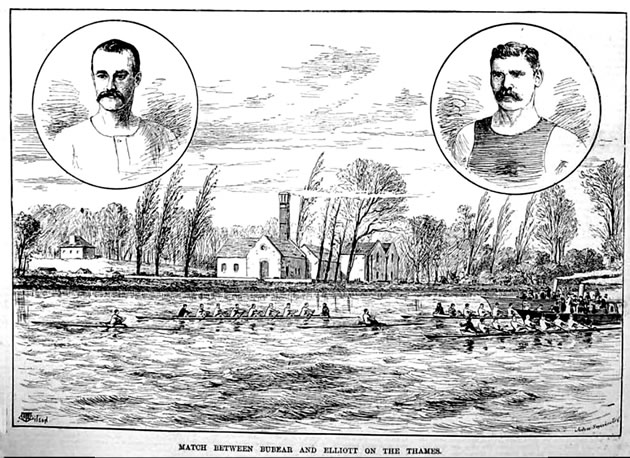

Professional Sculling
In competitive rowing, sculling means to propel a sculling boat or skiff, using two oars (one in each hand), as opposed to rowing which, strictly speaking, means propelling the boat with a single oar held by both hands. The sport evolved out of competitions between professional watermen.
It is difficult to appreciate today how popular the sport was in the second half of the nineteenth century. Thousands of people would line the banks of the Thames and the Tyne to watch the races -and head to head competitions between two scullers attracted tremendous interest. Newspapers reported not only the races, but details of the rowers' preparations and training. Challenges were issued in the Press. Prize money was regularly between £200 and £400 for the winner, at a time when the average annual wage was £50. (A collection was usually taken for the loser) The professionals were the sporting stars of their day. The prize money was raised by backers and the athletes relied greatly on their patronage. Amateur rowing was the preserve of the non-labouring classes, so working men like George relied on the professional route if they had any talent. There was no effective governing body for the professional sport, and Championships changed hand through challenge matches. It is evident that by the time Bubear came to the fore, the sport was growing decadent. Enormous sums were wagered on the outcome of races, and there was match fixing. Bubear seems to have been involved in that, despite his obvious capabilities as a sportsman. The pinnacle of the professional sport was in the 1870s, and thereafter there was a slow decline until the 1920s, by which time professional football had become established as THE popular sport.
George Bubear's Life
1859 Born in Threshers, Crediton, 25 July1861 Living with parents at Gunstone, Crediton and baptised at Crediton Parish Church, 22 September
1871 Aged 12 - farm servant at Higher Wotton, Colebrooke
1876 Moves to Hammersmith, London, to work as a labourer for a London Water Company
1876 Joins Hammersmith Alliance Boat Club
1880 Wins his heat in Barnes Sculling Handicap, October
1880 Marries Amy Barber at St. Luke's, Hammersmith, 25 October
1880 Beats Hawkins on the Thames in first professional race, December
1881 Birth of son George, February
1881 Living at 48 Lilian Road, Barnes
1881 Lost two professional races
1882 Wins 5 out of his 8 professional races
1882 Engaged as coach and trainer for Hereford Rowing Club
1883 Training other professionals
1883 Wins £400 against Largan on Thames
1883 Daughter Alice born, son George dies
1884-1885 Few professional wins. Declines challenge in June 1885 as he is "too busy to train". Perhaps he is by now a publican.
1886 Wins 5 professional races
1887 Wins Championship of England against Perkins on Tyne, February
1887 Sails for USA on Servia, April
1887 Trains Hanlan in the USA, and wins 3 professional races
1888 Promoting the Road Sculler
1888 Loses Championship to Ross, February
1888 Wins race on the Ysel, at Deventer, Holland, June
1888 Loses Road Sculling tournament in USA
1889 Son Albert born
1889 Several Road Sculling races in UK
1889 Loses 2 of 3 professional races on the Tyne and the Thames
1889 Sails for Sydney on the Oroya.
1890-92 Several professional races in Australia with mixed results
1892 Returns from Australia on the Ophir
1892 Successful in English regattas
1893 Beat Hosmer on the Thames; regains the Championship of England in January, only to lose it in September
1893 Appears in Captain Boyton's Water Show (left)
1893 Wins in the coxless fours at the National Regatta, August
1894Wins 2 of 3 professional single scull races, and in the coxless fours at the National Regatta for a second year
1895 Wins 2 professional races
1895 October - sails to New York on the New York to participate in an International Regatta. Wins double sculls with Barry, setting world record, and wins coxless fours with Barry, Haines and Wingate
1896 Training other professionals on the Continent
1896 Wins coxless fours race in Belleville, Ontario, August
1898 Loses all his professional races
1899 Death of his principle backer Acton Phillips, May
1899 June - November tried for fraud and sentenced at the Old Bailey to three months hard labour
1900 Loses against Emmett on the Thames
1901 At 10 Wymond Street, Putney, with daughter Alice
1902 Wins his last professional race on the Thames, for £100
1925 Declared bankrupt
1927 Dies of kidney failure, aged 67 in the West London Hospital
Cricketing Family |
||
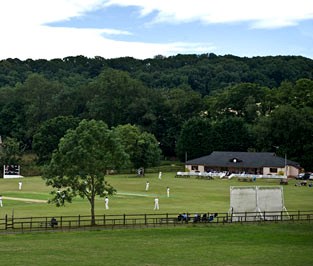 Sandford Cricket Club grounds today Sandford Cricket Club grounds today |
 |
|
| Crediton Cricket Team, late 1940s; Hugh Blaen standing third from left | ||
 Sandford
Cricket Club in the 1970s: the team featured several cousins. Sandford
Cricket Club in the 1970s: the team featured several cousins. |
As with rugby, so family members in Crediton were active
participants in the town cricket team. Its fortunes have waxed and waned
since the team was formed in 1864. Cousins and in-laws have both played
and officiated for the club, including cousin Ted Powlesland and distant
Fey in-law Hugh Blaen . The latter was a talented cricketer, and invited
to try for the Devon team, but couldn't take the time off work! He
played a major role with 40s team captain Dr. Jackson in reviving the
club after the war, and in training young players. Crediton has not had an active cricket team since the late 1960s, but another Mid-Devon parish of importance to our family - Sandford- has a flourishing cricket club. Sandford Cricket Club was founded in 1949. Since then the club has grown into one of the biggest clubs in Devon with huge success in cricket for all ages. The club currently has it’s 1st XI in the A Division after relegation in 2012, but its 2nd XI was promoted in 2012 to the Premier League in the Devon Cricket Division. It also has two teams playing in the North Devon Leagues on Sundays and the Women's team plays in the Devon Women's League. Family members have been at the heart of Sandford cricket from its inception to the present day. Three generations of our Glass cousins have furnished captains, leading players and officials of the club, and continue to set club records. |
|
Andy Caddick |
||
 Andy Caddick |
At its height in the 1890s Crediton Cricket Club fielded two Somerset County players - S.J.W.Woods and J.B.Challen.
We can boast a closer family connection with Somerset County team in the shape of Andrew Caddick, the
former Somerset and England fast-medium bowler. Andy married a Heard cousin. We have broken one of our rules for him by featuring a living family member, but his presence is well established on the internet.
Andy was born in Christchurch, New Zealand in 1968. He played cricket for New Zealand in the Youth World Cup of 1987/88. After touring England the following summer he decided to settle there. In 1990 he joined Somerset County, and has remained with the team until his retirement. Selected for England in 1992, he made his Test debut the following year against Australia at Manchester. Over his career he took 234 Test wickets, managing a remarkable thirteen 5-wicket triumphs. He was also a credible right hand bat, sharing a 10th wicket partnership with Alec Stewart against Australia at Edgbaston in 2001. He was named as one of the five Wisden Cricketers of the year in 2000, and in 2007 finished the season as the leading English wicket-taker with 75 wickets at 23.10. From 2007 he suffered from back problems which disrupted his County career somewhat, and he retired from first class cricket at the end of the 2009 season |
|



left to right: Denis Heard in Crediton Rugby XV, 2nd from left standing, and in Queen Elizabeth's school XV 3rd from left standing, and Jack Heard, in Jackson's works soccer XI 3rd from right standing /span> Page updated 31/07/2024
© Nick Heard 2024
I am grateful to Amy Rolph, of the World Rugby Museum, Twickenham, Paul Harris of Crediton Rugby Club, Chris Dodd, of the River & Rowing Museum, Henley-on-Thames, Dr. Angela Blaen, Jennifer Holmes and Caroline Bullock, for their help with the research for this page.

